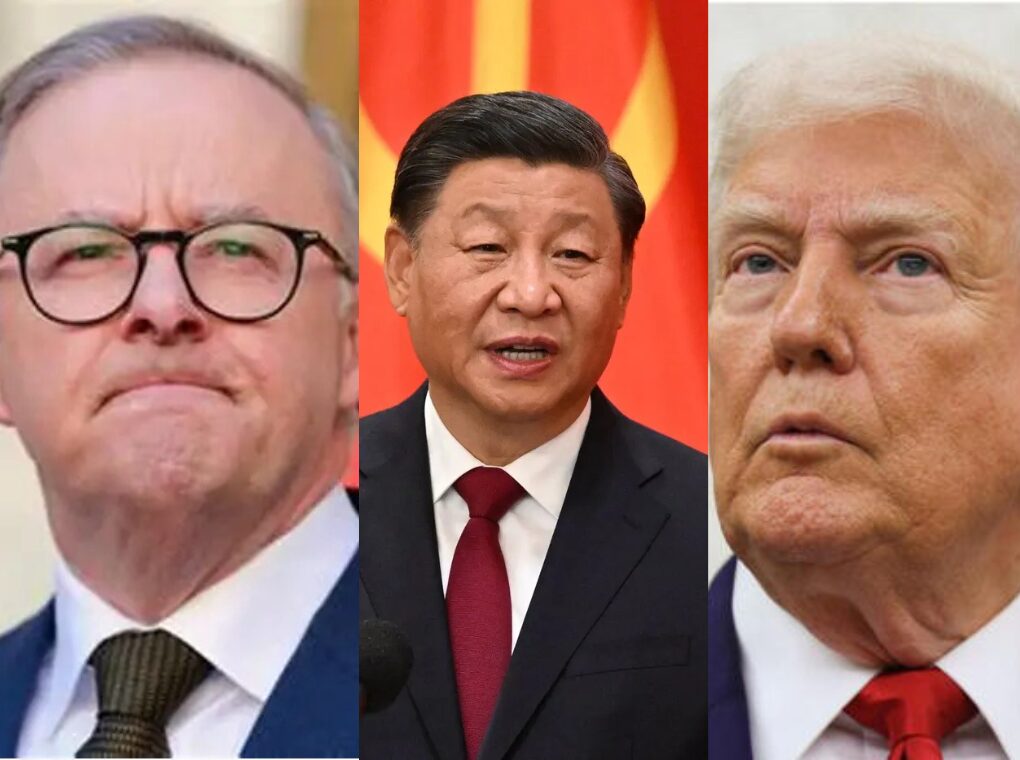Australia has been branded a “tool” of Washington by Chinese commentators after it hosted a prototype of the US Army’s Dark Eagle Long Range Hypersonic Weapon (LRHW) during the ongoing Talisman Sabre 2025 war games. The deployment marks the first time the experimental missile system has been stationed outside the US mainland, fueling sharp reactions from Beijing.
A Historic Deployment
Two Dark Eagle mobile launchers were flown by heavy-lift aircraft into Australia’s Northern Territory before being moved to undisclosed field locations for classified simulation drills. The move coincided with Talisman Sabre 2025, Australia’s biennial military exercise, which this year assembled more than 40,000 troops, sailors, and aircrew from 19 allied and partner nations.
The deployment is seen by analysts as a symbolic step by Washington to showcase the missile’s forward-operating capability, and by extension, to deter Chinese assertiveness in the Indo-Pacific.
Beijing’s Anger
China’s state-linked scholars and analysts were quick to denounce the missile’s arrival.
Zhou Bo, a retired senior colonel of the People’s Liberation Army and senior fellow at Tsinghua University, downplayed the Dark Eagle’s significance, insisting that China already operates superior systems such as the DF-17 and longer-range DF-27. Still, he noted that the LRHW’s presence in Australia was a “symbolic signal that Beijing has not overlooked.”
Shanghai Fudan University strategist Xin Qiang described the deployment as “a flexing of military muscle,” warning that “China will undoubtedly maintain a high level of alertness.”
Meanwhile, Chen Hong of East China Normal University accused Canberra of allowing itself to become “both a strategic and tactical weapon for Washington,” reinforcing China’s long-standing criticism that Australia is aligning too closely with US military strategy.
The Dark Eagle’s Capabilities
According to the US Congressional Research Service, the Dark Eagle is a truck-mounted system capable of speeds above Mach 5—more than 6,100 km/h—with an operational range of 2,800 km. From Australia’s north, it could theoretically strike Chinese-controlled outposts in the South China Sea in under 30 minutes.
Each battery consists of four launchers carrying eight missiles in total, supported by command and engineering vehicles. The weapon is designed to evade China’s layered missile and air defenses, providing the US and allies with a rapid-strike capability.
Despite being three years behind schedule due to technical hurdles and budget overruns, the Talisman Sabre trial validated the LRHW’s readiness, with Bravo Battery commander Captain Jennifer Lee declaring: “The Dark Eagle is truly ready to go.”
Diplomatic Strain
The timing of the missile’s arrival has particularly irked Beijing, as it coincided with Prime Minister Anthony Albanese’s diplomatic trip to China in July. Chinese analysts point to what they see as a contradiction between Australia’s declared policy of engagement with Beijing and its deepening military integration with the US.
“The divergence between Canberra’s diplomatic and military spheres is what keeps us vigilant,” said Chen Hong.
Rising Tensions in the Region
The missile debut comes amid heightened tensions across East and Southeast Asia. Chinese naval and air incursions around Japan’s Senkaku Islands have intensified, while Philippine forces clash almost daily with Chinese vessels in contested parts of the Spratly Islands.
Australia itself has faced several tense encounters with Chinese warships and aircraft in the South China Sea, where it has patrolled under international mandates since World War II.
Beijing continues to claim nearly the entire South and East China Seas, dismissing UN rulings and agreements that support the sovereignty of neighboring states.
With China’s military power expanding—now boasting the world’s largest navy and advanced missile arsenals—the US and its allies, including Japan, the Philippines, and Australia, are reinforcing their own deterrence postures in the so-called “First Island Chain.”
What’s Next?
Regional tensions are expected to escalate further. The Philippines recently allowed US missile units to train on its soil, prompting angry denunciations from Beijing. Japan, too, is preparing to host US forces in a major joint exercise in September to test defenses of its remote Sakishima Islands.
For Australia, the Dark Eagle episode underscores its increasingly precarious balancing act: pursuing trade and dialogue with China while simultaneously doubling down on US-led military deterrence.
As one Chinese analyst framed it, Canberra’s choices risk turning it into “Washington’s spearhead” in a contest that is only growing more volatile.
